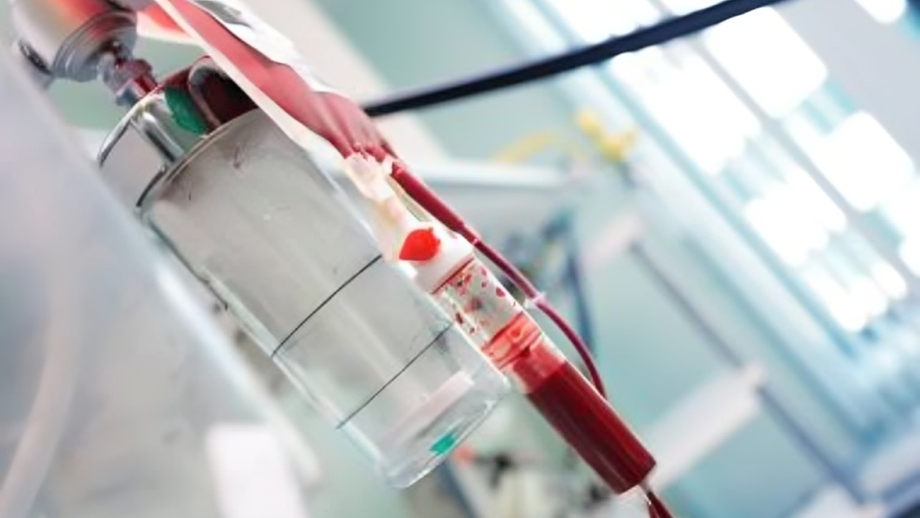
Global Standard Protocol for Managing Transfusion Reactions
Tareq Abadl, Medical Laboratory Specialist and Director of the Blood Bank at Dr. Abdelkader Al-Mutawakkil Hospital, posted on LinkedIn:
”Global Standard Protocol for Managing Transfusion Reactions….
Your Essential Blood Bank Guide
A transfusion reaction is a medical emergency – and every lab professional must know the correct steps to handle it safely and effectively. Here’s your clear, practical guide:
1. STOP the Transfusion Immediately.
- Disconnect the blood unit right away.
- Never restart the same unit under any circumstances.
2. Keep the IV Line Open.
- Run 0.9% Normal Saline through the same cannula.
- No medications or additives in the same line.
3. Notify the Physician Immediately.
- The doctor must reassess the patient and provide treatment (antihistamines, antipyretics, steroids, etc., depending on the reaction).
4. Recheck Patient and Blood Unit Identification.
Verify again:
✔ Patient name
✔ File number
✔ Blood unit number
✔ ABO/Rh type
✔ Crossmatch information
More than 60% of severe reactions are due to identification errors.
5. Send the Blood Bag Back to the Blood Bank.
- Keep the used blood unit, tubing, and leftover saline.
- Do NOT discard anything – it must be inspected.
6. Collect New Samples From the Patient.
Required tests usually include:
- CBC
- Hemolysis markers (bilirubin, LDH, haptoglobin)
- Direct Coombs Test
- Urine for hemoglobin
- Repeat ABO and Rh typing
- New Crossmatch (Major crossmatch)
- Antibody screen ± identification
7. Report the Reaction.
- Complete the official Transfusion Reaction Form and notify the Blood Bank.
- This is crucial for documentation and Root Cause Analysis.
8. Monitor Vital Signs Closely.
Every 15 minutes during the first hour:
- Temperature
- Blood pressure
- Heart rate
- Respiratory rate
9. Do NOT resume transfusion until evaluation is complete.
The Blood Bank will determine whether to:
✔ Release a new unit
✔ Select a more compatible component
✔ Or stop transfusion entirely.
Global Guidelines Confirm This Protocol
The following international authorities endorse these same steps:
International Sources:
✔ AABB – American Association of Blood Banks
Standards for Blood Banks and Transfusion Services
✔ CDC – Centers for Disease Control and Prevention
Guidelines for Transfusion-Associated Adverse Events
✔ WHO – World Health Organization
Blood Transfusion Safety Guidelines
✔ SHOT – UK Serious Hazards of Transfusion Scheme
National Hemovigilance Guidelines
✔ European Blood Alliance (EBA)
Standards for Transfusion Safety and Hemovigilance
✔ Canadian Blood Services
Clinical Guide to Transfusion
Quick Golden Rule
> STOP the transfusion → Maintain saline → Inform doctor → Recheck ID → Send unit → New samples → New crossmatch → Monitor vitals.”

Stay updated with Hemostasis Today.
-
Nov 19, 2025, 18:03Andres Ricaurte Fajardo on a Strongyloides Stercoralis Hyperinfection with Thrombosis
-
Nov 19, 2025, 17:50Marilena Vrana Reflects on PPTA Europe’s Visits with Members and Stakeholders in 2025
-
Nov 19, 2025, 17:32Michael Makris Shares Insights from Global Forum Meeting of the WFH Meeting in Montreal
-
Nov 19, 2025, 17:14Yazan Abou Ismail Takes The Legacy Award from Qatar Foundation
-
Nov 19, 2025, 17:02Wolfgang Miesbach Shares Real-World Evidence on Eptacog Beta from Spain
-
Nov 19, 2025, 16:34Ishita Singh Reflects on Haematocon 2025: A Reminder of Her Commitment to The Journey
-
Nov 19, 2025, 16:23Mehdi Kashani: I’m Really Excited to Share Schistosite.com
-
Nov 19, 2025, 16:09A ”Meow-cyte” from Melaku Abay Muluneh or Why Microscopy Never Gets Old!
-
Nov 19, 2025, 15:56Cuilan Li on her Contribution to a Cutting-Edge Project in Polycythemia Vera
